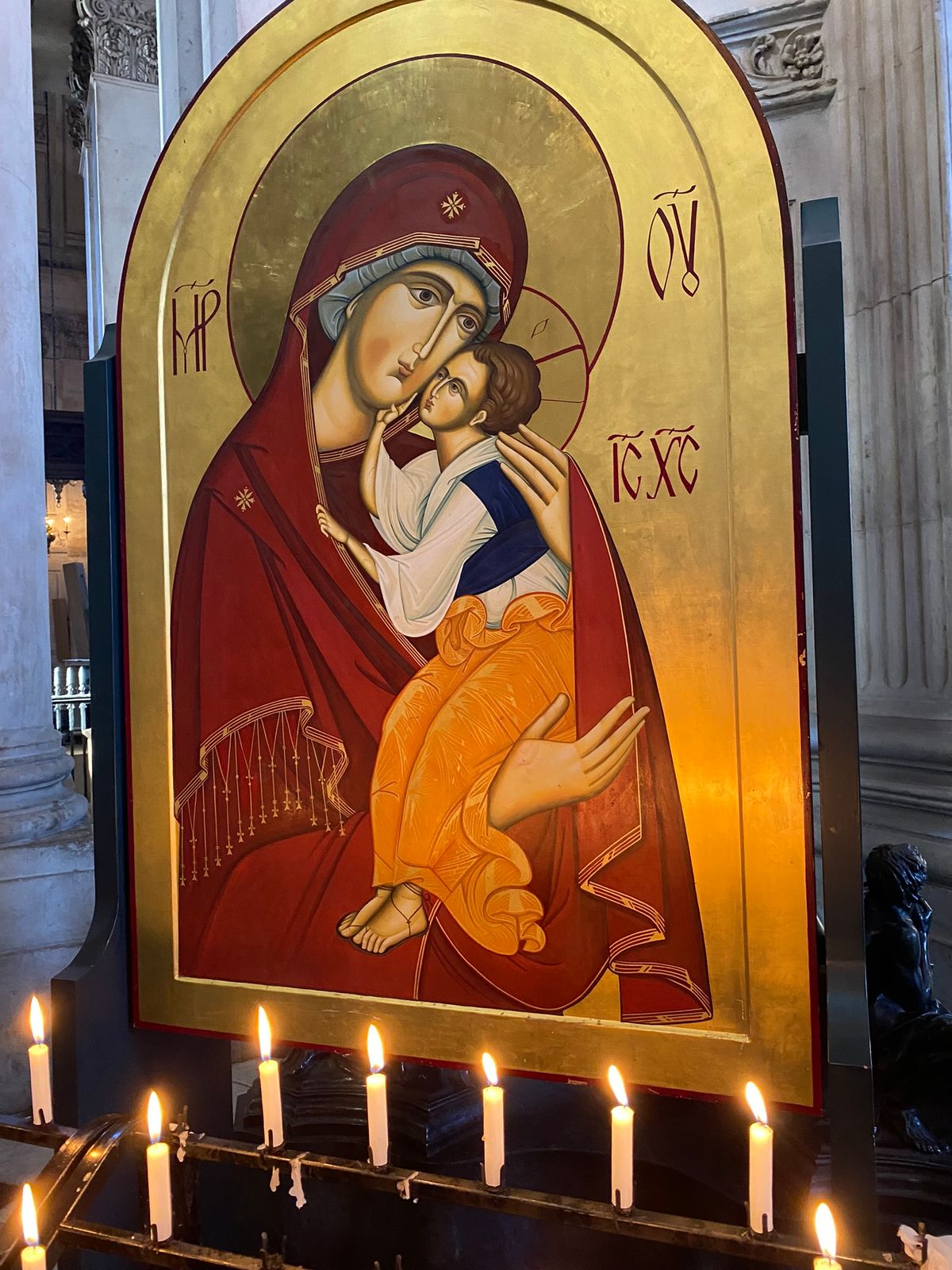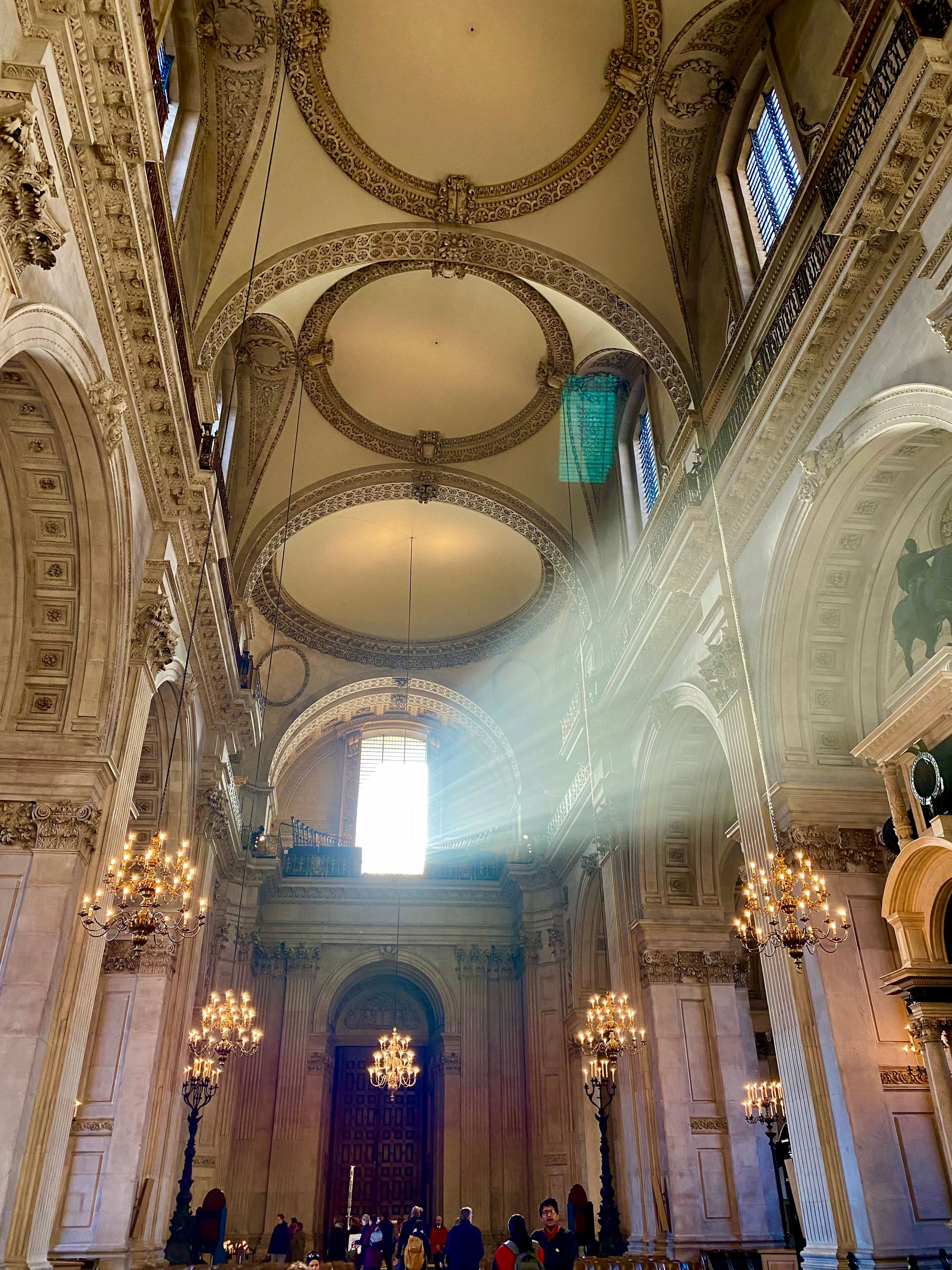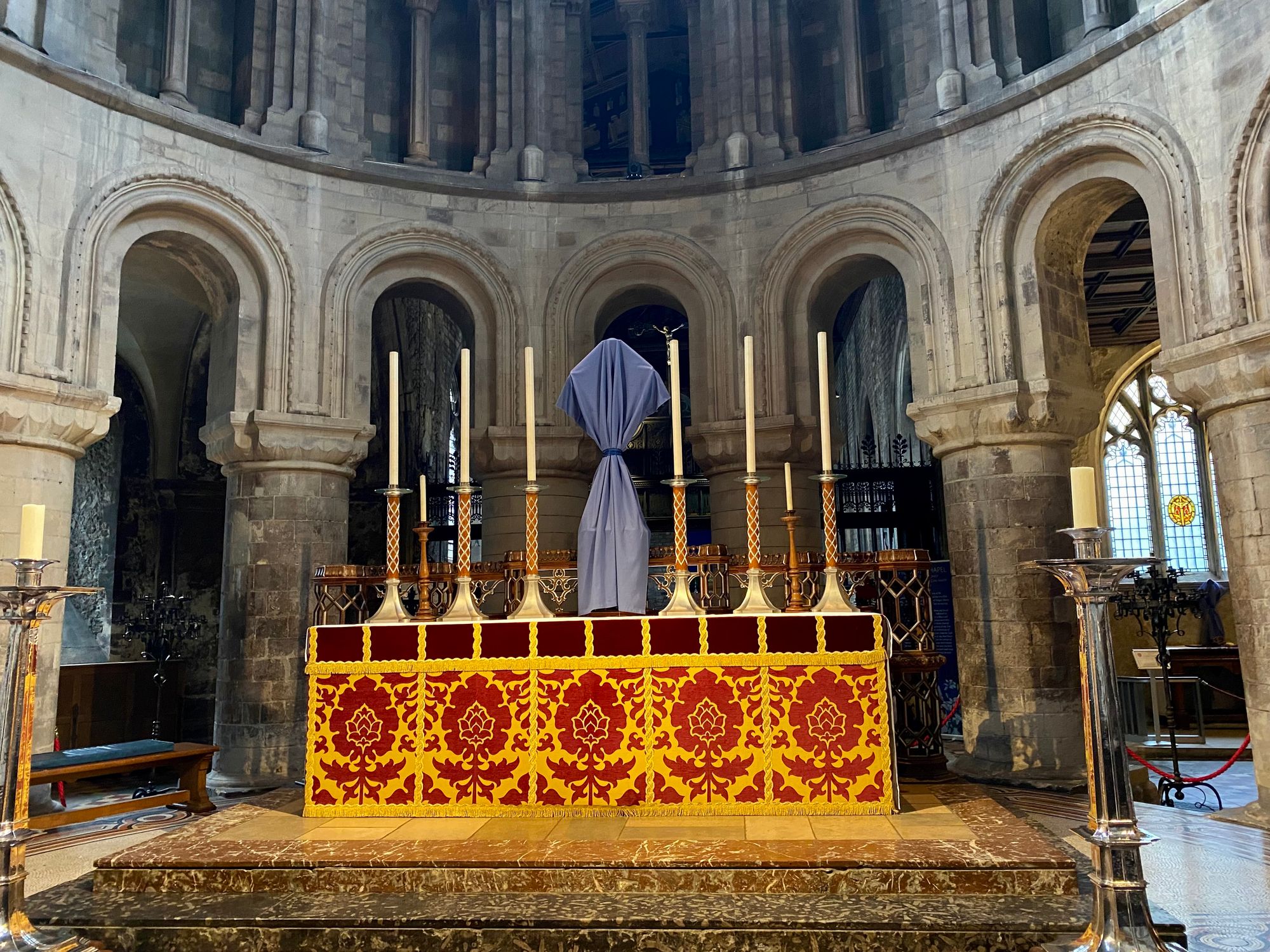Easter Traditions Around the World: A Comparison of Europe and the United States
Learn about Easter traditions around the world! From Easter fires and marches in Germany to Semana Santa processions in Spain and the Scoppio del Carro in Italy, discover the customs, foods, and decorations that make each region's celebrations unique.

Hi All,
The Easter week has started! If you are not in Europe or in the US, you may shrug this off, but in London, I can see things slowing down and many tourists from continental Europe near St. Paul's these days, so I decided to get into the spirit :).
For those who are relatively new to the concept of Easter, Easter is a time of renewal and rebirth for Christians, and many of the traditions associated with the holiday reflect this theme. If you are Jewish, it is similar to Passover. When I was living with the Jewish host family in Canada, I used to observe Passover around this period with them. Interestingly, my Muslim friends are also observing Ramadan, so I do see some patterns here. Apparently, this year, Easter, Ramadan, and Passover were all overlapping, which typically only happens three times a century. Easter commemorates the resurrection of Jesus, Passover celebrates freedom and liberation from slavery in Egypt, and Ramadan is a commemoration of Muhammad's first revelation.
Back to the story, while I was talking to my friend from Spain the other day - I realized that there are various different traditions being celebrated on Easter around the world. So, I wanted to learn more about the traditions and customs that vary greatly from one region to another. My exposure to Easter celebrations have been limited to the ones in Canada, the US, the UK and Itay, so in this post, we will explore the differences between Easter celebrations in Europe and the United States, including the history and significance of the holiday, traditional foods, decorations, and activities!
I hope you are having a peaceful week wherever you are in the world and whether you observe Easter or not. Please let me know if you do observe Easter (I know some of you may find this irrelevant as a non-Christian/Catholic), how you and your family celebrate Easter traditions!

I. Easter Traditions Around the World
Germany
Easter eggs are an important part of German Easter traditions, with egg decorating being a popular activity. Easter bread is a traditional food that is often baked with raisins and almonds. It is celebrated throughout the country with a variety of customs and rituals that vary from region to region.
Specific Customs and Rituals: One popular Easter tradition in Germany is the lighting of Easter fires, which take place on the Saturday before Easter Sunday. These bonfires are meant to symbolize the triumph of light over darkness, and are often accompanied by singing and dancing.

Another tradition is the Easter march, which takes place on Good Friday in many German cities. This is a solemn procession that commemorates the suffering and death of Jesus Christ, and is often accompanied by prayer and reflection.

Traditional Foods: Easter lamb is a popular dish in many parts of Germany, particularly in the south. It is often roasted and served with potatoes and vegetables.
Easter bread (Osterbrot) is another traditional food that is popular throughout the country. This sweet, spiced bread is often decorated with colorful eggs and is a staple of Easter breakfasts.

Easter eggs are also an important part of the holiday. They are often dyed and decorated with intricate designs, and are sometimes hidden for children to find in Easter egg hunts.

Decorations: Easter trees are a common sight in many parts of Germany during the holiday season. These trees are typically decorated with colorful eggs and other ornaments, and are meant to symbolize the renewal of spring.


Easter wreaths are another popular decoration. These are often made from fresh flowers and foliage and are hung on doors and windows as a sign of welcome and good luck.
Spain
Easter, or "Semana Santa (Holy Week)" in Spanish, is a deeply religious holiday in Spain, and it is celebrated with a variety of customs and traditions throughout the country for a week.
Processions and Parades: One of the most unique and popular traditions during Easter in Spain is the "processiones" or processions that take place throughout the week leading up to Easter Sunday. These processions involve members of religious brotherhoods carrying elaborate floats or "pasos" depicting scenes from the Passion of Christ. The floats are carried through the streets of cities and towns, accompanied by somber music and the sound of drums.

Penitential Garb: During these processions, participants wear traditional penitential garb, such as long robes or pointed hoods called "capirotes". These hoods were originally worn to hide the identity of those who were seeking forgiveness for their sins, but they have since become a recognizable symbol of Easter in Spain.

Traditional Foods: In addition to these processions, Easter in Spain is also a time for feasting and sharing traditional foods with family and friends. One of the most famous Easter dishes in Spain is "torrijas", which are similar to French toast and are made with bread soaked in milk, egg, and honey or sugar. Other traditional foods include "potaje de vigilia", a vegetable and bean stew served on Good Friday, and "bacalao", or salt cod, which is often served on Easter Sunday.
In Catalonia, there is a tradition of the Mona de Pasqua, a cake typically decorated with hard-boiled eggs and figurines.



Italy
Easter in Italy is a significant holiday that is celebrated with great religious fervor and traditional festivities. The Holy Week, starting from Palm Sunday to Easter Sunday, includes processions, mass, and rituals in most cities and towns. The celebration of Easter in Italy is second only to Christmas in its importance for Italians (I can attest to this based on my personal experience :)).
One of the most significant Easter traditions in Italy is the Scoppio del Carro, which is celebrated in Florence. This annual tradition involves the lighting of a cart filled with fireworks in front of the Duomo. The cart is pulled by oxen and is said to bring good luck to the city if the fireworks ignite correctly.

Another tradition that is observed in Rome is La Pasquetta, which is celebrated on the Monday after Easter Sunday. It is a public holiday throughout Italy and is observed with family gatherings and picnics in parks and open spaces.

Traditional foods: Traditional foods are an integral part of Easter in Italy. One of the most popular is Easter bread, which is made with flour, sugar, eggs, and butter, and is typically shaped like a dove. Another traditional food is the Colomba cake, which is a sweet, soft cake with a crunchy sugar crust shaped like a dove. Easter eggs or uova di Pasqua are another important aspect of Easter celebrations in Italy. These eggs are often given as gifts and are usually made of chocolate and come in various sizes and shapes.



Easter flowers are also used to decorate homes, churches, and public spaces in Italy during the Easter season. The most commonly used flowers are lilies, which symbolize purity and resurrection, and tulips, which represent new life.
The United States
Easter is a beloved holiday in the United States, celebrated by people of all ages and backgrounds. The Easter holiday in the United States is typically celebrated on the first Sunday after the first full moon following the vernal equinox. It is a time when families and friends come together to celebrate new beginnings and the arrival of spring.
Specific customs and rituals: One of the most beloved Easter traditions in the United States is the Easter egg hunt. Children of all ages search for colorful eggs that have been hidden by the Easter bunny (ironically, a main character of many American kids' horror stories lol), a beloved character that has become synonymous with the holiday. Other popular customs include dyeing Easter eggs and participating in Easter parades.


Traditional foods: Easter is also a time for feasting in the United States, with many families enjoying special foods such as ham, lamb, and hot cross buns. These traditional dishes are often accompanied by fresh spring vegetables and sweet treats like Easter candy.
Decorations: Easter decorations are a colorful and festive part of the holiday in the United States. Easter baskets filled with candy and small toys are a popular gift for children, while Easter bunnies and chicks are often used as decorations in homes and public spaces.


United Kingdom
Easter is a widely celebrated holiday in the United Kingdom, with various traditions and customs observed across the country. The Easter holiday is observed in the UK on the first Sunday after the first full moon following the vernal equinox, just like in the United States. It marks the end of Lent and is a time of new beginnings and the arrival of spring.
Specific customs and rituals: One of the most iconic Easter traditions in the UK is the consumption of hot cross buns, sweet and spiced bread with a cross on top that symbolizes the crucifixion of Jesus. Another popular tradition is the Easter egg hunt, where children search for chocolate eggs hidden by the Easter bunny. Additionally, many churches hold special services during Holy Week, including Palm Sunday, Maundy Thursday, and Good Friday.

Traditional foods: Easter is also a time for feasting in the UK, with many families enjoying special foods such as roast lamb, roasted potatoes, and seasonal vegetables like asparagus and spring greens. Simnel cake, a fruit cake with marzipan, is another traditional treat enjoyed during Easter.

Decorations: Easter decorations are also popular in the UK, with homes and public spaces adorned with colorful flowers and Easter-themed decorations such as bunnies and chicks. Easter bonnets, hats decorated with flowers and ribbons, are also a common sight during Easter parades and celebrations.


Conclusion
Easter is a holiday that is celebrated in many different ways around the world. Whether you are decorating eggs, participating in an Easter parade, or enjoying a special Easter bread, the traditions of Easter bring people together and provide a sense of community and joy.
As we have seen in this post, there are many similarities and differences in how Easter is celebrated in Europe and the United States. While both regions have a strong emphasis on Easter eggs, Europe tends to focus more on Easter Monday and traditional Easter breads, while the United States has a unique tradition of Easter parades and a love for Easter candy.
Despite these differences, the underlying message of Easter remains the same - a celebration of new life and hope. No matter where you are in the world, Easter is a time to come together with loved ones and enjoy the traditions that make this holiday so special.
II. FAQs:
Q: Why crosses are covered in cloth?
A: In some Christian denominations, crosses are covered before Easter as a symbol of mourning and penance. This tradition is observed during the period of Lent, which is a time of fasting and reflection leading up to Easter Sunday.
Covering the crosses is a way to visually remind people of the suffering and sacrifice of Jesus Christ on the cross. It is also seen as a way to focus on spiritual matters and prepare for the joyous celebration of Easter.
In some traditions, the crosses are covered with a purple or black cloth starting on Ash Wednesday and remain covered until Easter Sunday. In other traditions, the crosses may be covered with flowers or greenery on Easter Sunday as a symbol of resurrection and new life.

Q: Are there any Easter traditions that are celebrated in both Europe and the United States?
A: Yes! Decorating Easter eggs is a popular tradition in both regions.
Q: What is the significance of Easter eggs?
A: In many cultures, eggs are a symbol of new life and rebirth, which ties in with the religious significance of Easter as a celebration of Christ's resurrection.
Q: How long have Easter traditions been around?
A: Many Easter traditions, such as the decorating of eggs, have been around for hundreds of years, while others, like the Easter bonnet parade, are more recent inventions.
Q: How have Easter traditions evolved over time?
A: Easter traditions have evolved over time to incorporate both Christian and pagan traditions, and they have also been influenced by cultural and regional differences.
![Obsidian Essay] Christmas Eve Reflection: The Lattice and the Boardroom (the Monastery and the Vow)](/content/images/size/w720/2025/12/WhatsApp-Image-2025-12-25-at-01.12.555-1.jpeg)
![Obsidian Essay] The Death of the Enemy: Notes on UK Citizenship and Sovereignty](/content/images/size/w720/2025/12/citizenship-ceremony-7-1.jpg)
![Obsidian Essay] 🍁 Softening is a Form of Strength: A Thanksgiving from the ICU](/content/images/size/w720/2025/12/KakaoTalk_20251128_034620737-2.jpg)